Publications
Some of our publications are still available (if the price is not shown, title is out of print), and can be purchased by mail order at £10 including P&P. Books can also be purchased from Wye Newsagency, 38 Church St, Wye.
To make a purchase, or for any other enquiries, please email:
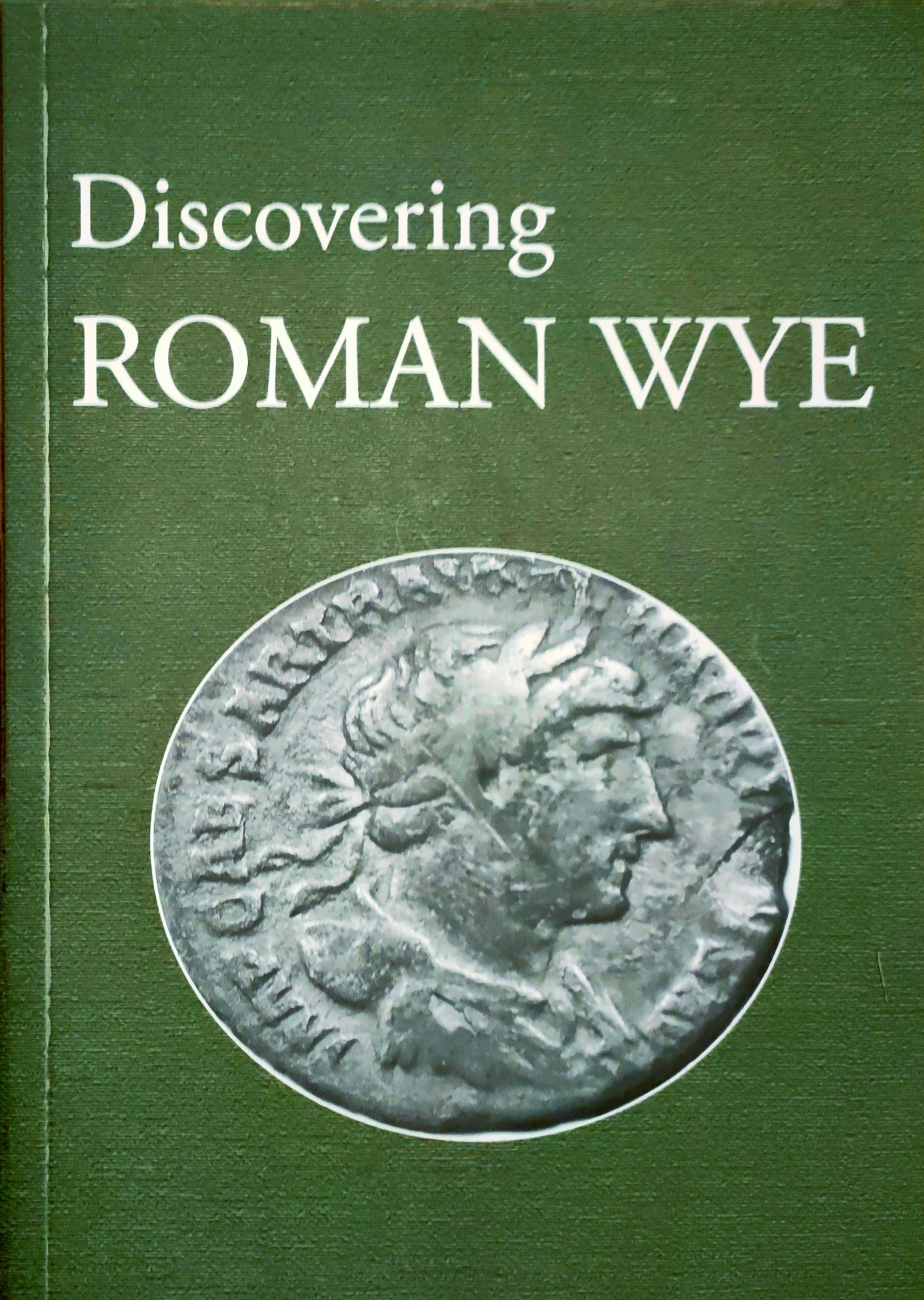
Discovering Roman Wye
Paul Burnham (2023); edited and designed by Maureen de Saxe
This book provides the reader with a picture of the life and times of Roman Wye. Here, the many strands of evidence for the period are brought together. Paul has first-hand recollection of works carried out by pioneers such as Jim Bradshaw made over the past half century. The outcome is that key information on the Roman settlement and use of Wye has been salvaged and presented here, just when much of it was on the brink of being lost to us.
The ‘catchment’ of evidence is broad, pointing up how extensive the occupation and crafts at Wye were in Roman times. From the details Paul builds an interpretation that brings Roman Wye to vivid reality, reflecting what we know more widely of the character of Britain at this time. What emerges is an evidence-based picture of intense activity in iron working, agriculture, villa lifestyles, trade and consumption, evoking life by the river all those centuries ago.
(Edited foreword Dr Steve Willis Department of Classics and Archaeology, University of Kent)
£10.00
A Window on the Church of England: the History of Wye Parish Church
Paul Burnham (2015)
The original dedication of Wye Parish Church was to St. Gregory the Great, and it is possible that the first building dated c 600. Its subsequent history has frequent links with national events, so A Window on the Church of England has much more than local interest. But, with 248 pages, over 100 illustrations and an extensive bibliography, it is also full of interesting details illuminating the rich history of Wye.
£10.00
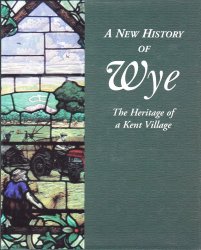
A New History of Wye
Edited by Paul Burnham and Maureen de Saxe (2003)
The history of Wye is of more than local interest, but the only previous history of the village was published in 1842 by William S Morris, the village doctor. A New History of Wye details some of Wye's links to the wider history of England and covers aspects of its history from the early settlements through to the end of the Second World War. The pages are enlivened by accounts of eccentrics, philanthropic citizens, political radicals, scientists, religious pioneers and even a lady poet who wrote of the hurricane that devastated Wye exactly 300 years ago. Most of the chapters have been written by members of Wye Historical Society with a special interest in their chosen subjects. The book draws on the exensive archives of the Society and incorporates the results of original research by the individual authors. There are almost three hundred illustrations and a bibliography accompanies each chapter.
OUT OF PRINT
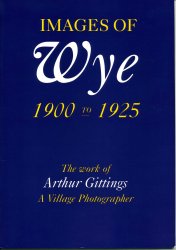
Images of Wye
Maureen de Saxe
During 1995, a hoard of some seven hundred half-plate photographic negatives was found in the roof space of the old cottage and corner shop, next to the Ticked Trout public house in Wye, when the son of the new owner was exploring the attic. Amazingly, the glass plates had remained untouched for at least fifty years despite many changes of tenant and owner, even when the building was being re-roofed. Recognizing that they would be of considerable local interest the owner, Graham Miller, presented them to the Wye Historical Society.
All the plates were extremely dirty and the task of sorting and cleaning them was begun by the late Henry Haste. Although a number were broken, stuck together, or showed damage to the emulsion, most of the negatives were in remarkably good condition and many were perfect. Henry discovered that they were the work of Arthur Gittings, who had traded from the corner shop and established himself as the village photographer during the early years of the century.
OUT OF PRINT
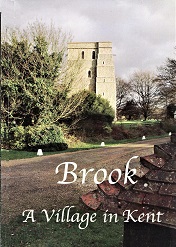
Brook: A Village in Kent
Written by Graham Bradley; edited and designed by Maureen de Saxe
A linear settlement with two lanes (Nat's Lane and Troy Town Lane), Brook probably evolved from an Anglo Saxon settlement of the 600s and well before 1066 the Manor of Brook had been given to the Priory of Christ Church in Canterbury. Dr Bradley describes the Manor Complex pointing out, in particular, the brook (skirting the south of the complex) from which the settlement gained its name. By the time of the Domesday Book (1086) Brook may have covered approximately 500 acres. The acreage of crops farmed in 1291 totalled 85.5 acres but, owing to the Black Death, this had dropped to 44 acres in 1371.
Brook has a number of historic buildings including, of course, Court Lodge (built around 1400) which was the hub of the Manor estate, Brook Barn (which now houses the Agricultural Museum) and Court Lodge Oast. St Mary's Church is also of special interest, with its wall paintings and fine medieval tiles. Although described today as "on the road to nowhere in particular", Dr Bradley demonstrates that Brook has a fascinating history and is most certainly a place worth exploring.
OUT OF PRINT
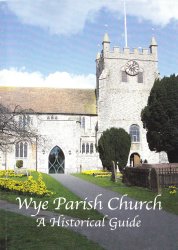
Wye Parish Church of St Gregory and St Martin Kent - A Historical Guide
Written by Anne Findlay; edited and designed by Maureen de Saxe
Since the thirteenth century, through good times and bad, the Parish Church of St Gregory and St Martin has stood guardian over the village of Wye. Situated above the valley of the River Stour, the church is the focal point of a village which has developed from a small market town into a busy rural centre and a place of learning.
Larger than is usual for a country village church, it was larger still before 1686, when the old central tower with its wooden steeple collapsed and destroyed the grand transepts and long chancel which had served Cardinal Kempe's college for priests.
The massive tower and the small chancel were built around 1706. They were added to the large thirteenth-century nave to replace the ruined chancel and steeple. Later restorations have considerably altered the interior, and the present magnificent west window was installed after bomb damage in the Second World War. This illustrated history is the story of Wye Church's varied fortunes since medieval times and of some of those who have helped to ensure its survival to become the thriving and imposing building it is today.
£10.00
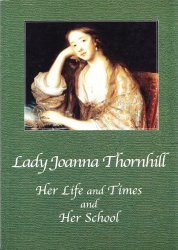
Lady Johanna Thornhill - Her Life and Times and Her School
Written by Paul Burnham; edited and designed by Maureen de Saxe
Lady Joanna Thornhill is remembered in Wye chiefly as the founder of the primary school that still bears her name. But she came from a prominent West-Country family, the Grenvilles, who traced their origin to a supporter of William the Conqueror from Gran(d)ville in Brittany, and she had many distinguised ancestors.
By the time Joanna was born in 1635, as the tenth child in a large family, the Grenvilles had lived for many years at the manor of Stow (or Stowe), in the far north east of Cornwall. Johanna grew up during the troubled times of the Civil War, in which her father and brothers supported the Royalist cause, and her father was killed. In 1653, when only eighteen, she married another Royalist, widower Richard Thornill, of Olantigh near Wye, as his second wife. He died four years later leaving her with two step-children and in somewhat straitened circumstances.
When her stepson came of age, Joanna left Olantigh and moved to her brother's apartments in Whitehall Palace and, in 1666, was appointed as a Woman of the Bedchamber to Queen Catherine. Later, when the Queen moved to Somerset House, Joanna had her own rooms and servants and she remained a member of the Queen's Household until Catherine returned to Portugal in 1692. But Joanna kept her apartment in Somerset House until her own death.
Lady Joanna died in January 1708/9, probably in London, but she had retained an affection for Wye and requested that she should be buried in Wye Parish Church. In her will she gaves instructions for her funeral and for her monument in the Church. She left money to help the poor of the village and to found a school for the boys and girls. This continues today as the Lady Joanna Thornhill (Endowed) Primary School.
£10.00
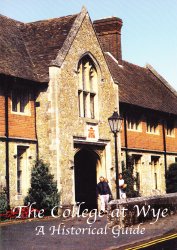
The College at Wye - A Historical Guide
Written by Paul Burnham; edited and designed by Maureen de Saxe
Founded by Cardinal Kempe in 1447 as a college for priests with an associated Grammar School, the original buildings of the College, next to the Parish Church of Wye, have grown through more than 500 years by many additions. These bring together architectural styles of different periods. Arranged around four small courtyards, the overall effect of the buildings today is of an Oxford or Cambridge college transported to a village in Kent.
In more recent years the College has been extended even further, for example by the Russell Laboratories. The Kempe Centre on the opposite side of Olantigh Road was completed in 1996. This book is however only concerned with the College buildings on the original site. It is in two parts: a brief history of the College and a 'walk-round' guide.
£10.00
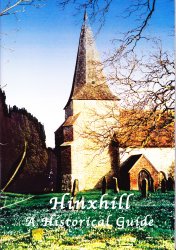
Hinxhill - A Historical Guide
Written by Paul Burnham; edited and designed by Maureen de Saxe
Since 1987 the small but very distinctive parish of Hinxhill has been united administratively with that of Wye. Yet through many centuries Hinxhill was a community with an entirely separate history. Recognising this, the Wye with Hinxhill Parish Council has held several of its meetings in its ancient church.
£10.00

